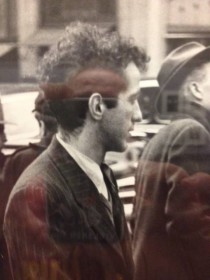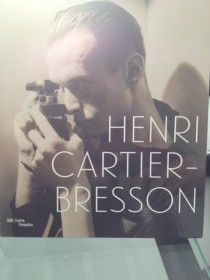


Americans in Paris
To be honest we lost our way at the big Cimetière Montparnasse. We had been talking about paying a visit to Sartre & Beauvoir or why not Gainsbourg, but suddenly my wife points and says, look, here is Joris Ivens. And many warm thoughts fill my head. His classic from Borinage (1936), his series from China that we bought for distribution at Statens Filmcentral (National Film Board of Denmark) and his last, the non-political film ”Une Histoire de vent” that I saw in Centre Pompidou with the presence of the director. I remember him sitting in his wheelchair with his beautiful white hair – as you see him in the film in the desert trying to tame the wind with his camera, as he hat put it. He lived from 1898 to 1989, google his filmography, an amazing oeuvre, a man of the world.
But this small personal report from a sunny Paris has its focus elsewhere. On the Americans in Paris. Not Gershwin or Minelli or Hemingway, not the burgers that are now available in almost every café but (first) on the Beat Generation and the exhibition about Kerouac, Ginsberg, Burroughs, Ferlinghetti, Cassidy and so on at Centre Pompidou. We got there on the last day it was open and I had high expectations after all the clever observations our Danish Beat Generation expert par excellence Lars Movin had formulated. No disappointment – photographs, films, drawings, collages, paintings, politics, provocations, poetry, long interview with Ginsberg, who mentions Ezra Pound and Céline as inspirators among many others for the Generation, that I first learned about through Danish author and journalist Erik Thygesen, who back in the 60’es published translations of Ginsberg, Ferlinghetti and others in the book ”San Francisco Renaissancen”. Have it at home. Must read Ginsberg’s ”Howl” again in Danish language…
… and then a meeting – again – with still alive photographer Robert Frank, some of his photos from the monumental ”The Americans” and his film ”Me and my Brother” (1968) that I need to get and can get – through the publication of the publisher Steidl, here is a quote from the Steidl site:
”…It celebrates the return of the poetic essay as assemblage, the affirmation of the underground as a wild cinematic analysis in the form of a collage, and skillfully weaves together opposites, plays counterfeits against the authentic, pornography against poetry,acting against being, Beat cynicism against hippie romanticism, monochrome against colored…”
Sara Thelle called – in her text about Robert Frank on Filmkommentaren – ”Me and my Brother” ”a slap in my face”.

Look at the photo of Robert Frank, a reframed snapshot taken by me and my i-phone, Frank in New York around 1947, a photo taken by Louis Faurer, whose exhibition we visited at the Fondation Henri Cartier-Bresson. Some words about HCB’s house first: A three floor building in a nice area near rue Daguerre, adresse 2, impasse Lebouis, a private fondation with great exhibitions and ”conversations autour de la photographie”. Strongly recommended.. No photos of HCB but a wonderful book to enjoy, when you have done the three floors.

Louis Faurer, name looks French, no, he is an American in Paris, for the moment his photos are exhibited at the HCB fondation. Born in Philadelphia in 1916, he took pictures there and in New York, where Robert Frank invited him to stay at his place so he did not have to return to Philadelphia after work. People and situations in NY, very often around Times Square, a lot of love towards the ones he photographed, a fine sense of framing, praised by Frank vice versa, ”we never criticised each other”, Faurer has said. Faurer could afford his art, as he like many other creative photographers earned his money through fashion photography. Steidl, the publisher, again, a book about Faurer and the exhibition has been published.
… you don’t believe it, while writing this piece of text, a band is playing dixieland jazz in the street. America in Paris!
https://steidl.de/flycms/Books/Me-and-My-Brother-0409414457.html